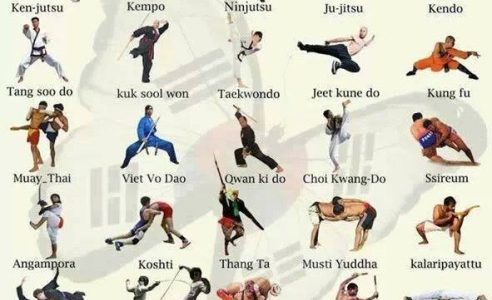The Background And Advancement Of Martial Arts Around The World
The Background And Advancement Of Martial Arts Around The World
Blog Article
Content Composed By-Winkler Vick
Martial arts have a remarkable background that extends centuries and continents. You may locate it interesting exactly how old techniques like Shuai Jiao and Kalaripayattu prepared for contemporary combat techniques. These techniques not just highlight physical abilities but also mirror the cultures that birthed them. As you explore their development, think about just how globalization has transformed these standard forms into crossbreed styles. What influences do you believe have formed today's martial arts landscape?
Ancient Martial arts: The Foundations of Fight
As you explore the globe of ancient martial arts, you'll discover the rich structures that shaped fight techniques across societies. Very early techniques focused on Self-Defense and survival, frequently including strikes, grappling, and weaponry.
In ancient China, for example, techniques like Shuai Jiao stressed tosses and joint locks, while India's Kalaripayattu showcased dexterity and liquid motion. Japanese samurai developed Kenjutsu, a polished swordsmanship that highlighted self-control and approach.
These martial arts served not just for battle yet additionally as a way of individual growth, instilling worths like regard and willpower. The blending of these strategies in time prepared for the diverse martial arts you see today, each showing the one-of-a-kind approaches and needs of its culture.
The Social Influence on Martial Arts Growth
While martial arts often show the sensible demands of a culture, they likewise embody the social values and beliefs of their beginnings. When you check out different martial arts, you'll see just how they're influenced by religion, philosophy, and social norms.
For instance, the focus on regard and technique in Japanese martial arts comes from Zen Buddhism and samurai society. In how often do kids neeed to take martial arts , Brazilian Jiu-Jitsu advertises flexibility and strategy, shaped by the need for efficiency in a diverse, multicultural atmosphere.
You could discover that the rituals, uniforms, and training approaches mirror a neighborhood's background and identification. By understanding these cultural influences, you grow your appreciation of martial arts and their duty in shaping human experiences around the world.
Modern Adaptations and the Globalization of Martial arts
Martial arts have actually transformed dramatically in current years, adapting to modern society and global impacts. visit this site 'll observe that traditional kinds have combined with modern methods, creating hybrid styles like MMA. These adaptations deal with diverse target markets, making martial arts available and enticing around the world.
With the surge of social media sites and digital systems, you can discover tutorials and competitors from all edges of the world, breaking geographical obstacles. This globalization has actually led to a shared appreciation for different self-controls, from Brazilian Jiu-Jitsu to Taekwondo.
As guila kajukenbo engage with these arts, you'll recognize they're not practically battle; they advertise health and fitness, self-control, and psychological health.
Eventually, contemporary adaptations have actually improved the martial arts landscape, making it a dynamic and progressing method.
Conclusion
In exploring the history and development of martial arts, you uncover an interesting mix of methods, cultures, and philosophies. From ancient techniques like Shuai Jiao and Kalaripayattu to the modern-day adaptability seen in mixed martial arts, martial arts reflect humanity's pursuit for Self-Defense and personal development. As you engage with these practices, you not just get abilities yet likewise a deeper appreciation for the diverse customs that shape our world today. So, proceed your journey and accept the art of fight!
